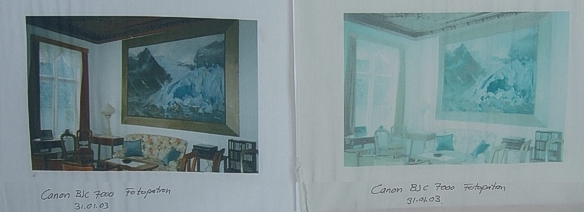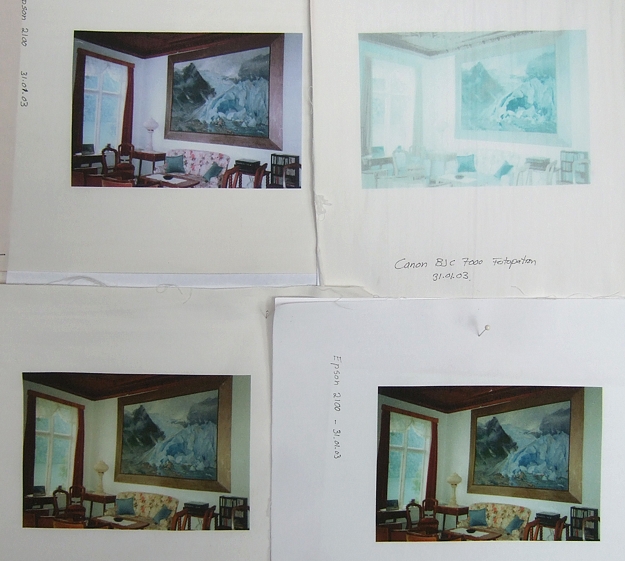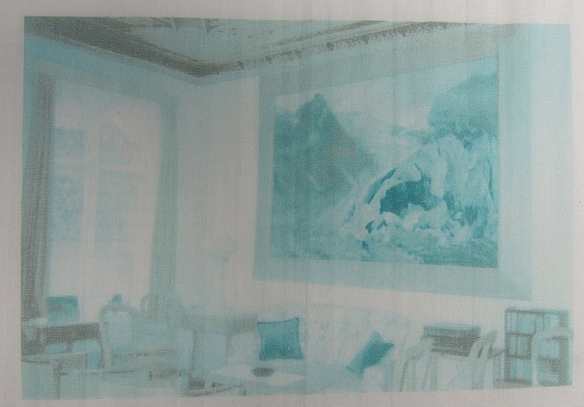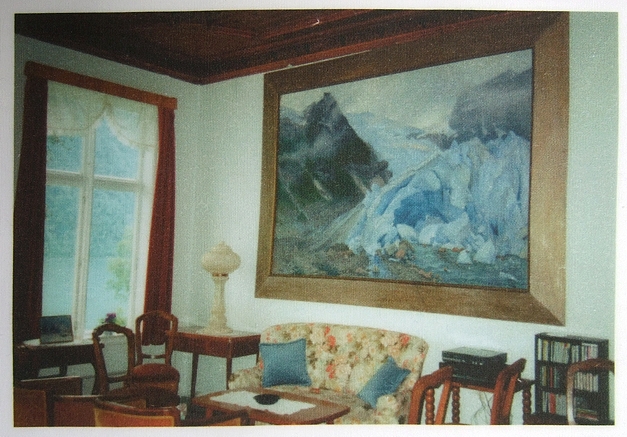
Fading test dye based and pigment ink
The photos below compare the fading of fabric prints made with dye based inks (from a Canon 7000 printer, top), and prints made with pigment based inks (Epson 2100, bottom).
The test started in January 2003. I made two prints from each of the two printers. One print from each of the printers have been kept in the dark. The other two prints were mounted on cardboard and have been standing on a windowsill exposed to daylight and direct sunshine. the photos below were taken in February 2007, four years after the test started.
The two prints from each printer were placed side by side and photographed. The prints that were kept in the dark are to the left in both pictures.
I think these photos speak for themselves regarding which ink type fades the most.
Usually we do not let a quilt hang in a window year after year, so in a real situation the fading of the dye based ink would not be as dramatic as this over the same amount of time. However, when looking at previous tests, one can detect fading after a very short time, so some fading must be expected to occur over the years when using dye based inks.

|
 |
|
The photos below were taken in June 2013, more than 10 years after the test above was started. | |
 |
Here I have photographed 4 samples all together, so they all have the same light conditions in the photo. All four were printed on fabric on the same day, January 31st 2003.
The two at the top have both been standing in a window for 10 years. The one to the left is the Epson pigment based ink print, and the one to the right is the Canon dye based ink print. The two below are both Epson prints. The one to the left has been hanging on a wall in the living room, 2-3 meters from the window (like you would normally place a wall hanging). The one to the right has been kept in the dark. |
|
On the prints that has been in the window, the dye based ink (Canon in this case) is almost completely gone. The Epson one holds up a lot better, although it has lost a fair amount of yellow. I used a Pigma pen to mark the prints, and the writing is still clear on all the samples. Also, the fabric has yellowed a bit on the ones exposed to light, while it is still very white on the one that has been kept in the dark. That explains why the one placed on the wall is more yellow than the one that was kept in the dark. Below are closer photos of all four samples. | |

Epson pigment based ink, in window for 10 years. |

Canon dye based ink, in window for 10 years. |

Epson pigment based ink, on wall for 10 years. |

Epson pigment based ink, in the dark for 10 years. |
Photos on fabric index page

Go to Norwegian pages